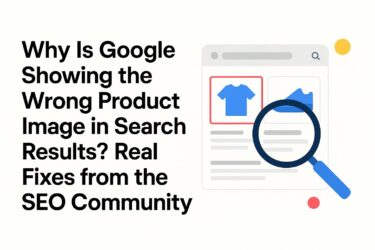Introduction to Google Signals in GA4
Google Signals is a powerful tool that enhances the capabilities of Google Analytics 4 (GA4). By leveraging data from users who are signed into their Google accounts, Google Signals allows GA4 to provide more comprehensive insights into user behavior across different devices and platforms. This means you can track a user’s journey from mobile to desktop and understand their interactions more accurately.
What is Google Signals?
Google Signals gathers data from users who allow ad personalization. This includes info about user age, interests, and how they use different devices. When users are signed into Google, Google Signals can follow their activities across multiple devices. This gives a more complete view of how users interact.
Key Features of Google Signals:
Tracking users on different devices helps you understand how they interact with your website or app. You can get detailed reports on user demographics like age and gender. This also allows you to create more targeted remarketing lists based on users’ cross-device behavior.
Benefits of Using Google Signals in GA4
1. Cross-Device Insights
With Google Signals, you can gain a holistic view of how users engage with your site or app across various devices. This feature helps in identifying patterns and trends in user behavior, enabling you to optimize the user experience effectively.
2. Detailed User Demographics
Google Signals enhances your demographic reports by providing more granular data about your audience. This includes age, gender, and interests, which can help tailor your marketing strategies to better meet the needs of your target audience.
3. Improved Remarketing Capabilities
By understanding how users use different devices, you can create better ad campaigns. Google Signals lets you make lists for ads that target users based on their actions across devices. This leads to more people taking the action you want.
Setting Up Google Signals in GA4
To enable Google Signals in GA4, follow these steps:
- Sign in to Google Analytics: Access your GA4 property.
- Admin Settings: Go to the Admin section.
- Property Settings: Under the Property column, click on Data Settings, then Data Collection.
- Enable Google Signals: Follow the prompts to activate Google Signals.
Impact of Google Signals on GA4 Reporting
Google Signals significantly enhances GA4’s reporting capabilities. By providing a more comprehensive view of user behavior, it helps businesses make data-driven decisions. However, it’s essential to understand how it influences various reports and metrics.
Enhanced Audience Reporting
With Google Signals, audience reports in GA4 are more detailed and insightful. You can see how different segments of your audience interact with your site or app, which can help in creating more personalized marketing campaigns.
Conversion Tracking
Google Signals improves conversion tracking by attributing conversions to users across devices. This means you can track a user’s journey from initial interest to final conversion, even if they switch devices during the process.
Limitations and Considerations
ImproveShow HardWhile Google Signals has many advantages, it also has some limitations. It’s important to understand both the pros and cons. Some key things to consider are: .
ImproveShow HardHere is the content with improved readability: . .User consent is important. Data is collected only from users who allow Ads Personalization. GA4 sets data thresholds. This prevents identifying individual users. This may limit the detailed data you can see.
Recent Changes to Google Signals
As of February 2024, Google said Google Signals will no longer be part of GA4 reporting. This change affects how data is reported. But it does not change the collection of Google Signals data. The data will still be used for demographics, interests, and audience purposes in Google ads.
Frequently Asked Questions (FAQs)
How does Google Signals enhance cross-device tracking in GA4?
Google Signals provides a unified view of user interactions across devices, allowing for more accurate tracking and reporting of user behavior.
Which reporting features are affected by the removal of Google Signals from the reporting identity?
Understanding this change helps marketers adjust their strategies. Specific features impacted include audience insights and cross-device conversion tracking.
How can Google Signals improve audience targeting and remarketing in GA4?
By using data from Google Signals, you can create more personalized and targeted marketing campaigns, resulting in higher engagement and conversion rates.
Conclusion
ImproveShow HardGoogle Signals adds useful insights to GA4. It shows you how users behave across different devices. When you turn on Google Signals, your business can track users better across devices. This also improves your audience data and remarketing. Even with recent changes, Google Signals is still a strong tool. It can enhance your GA4 reporting and help you make data-driven choices.
To get more details on setting up and using Google Signals, go to the Google Analytics Help Center.



